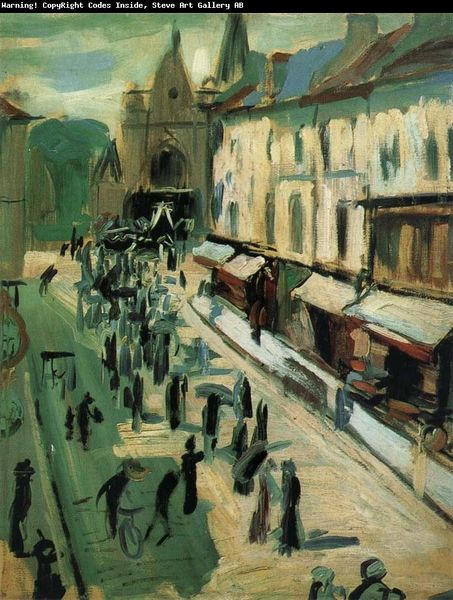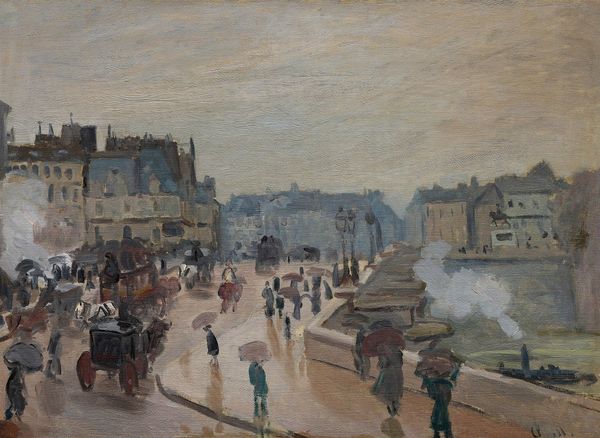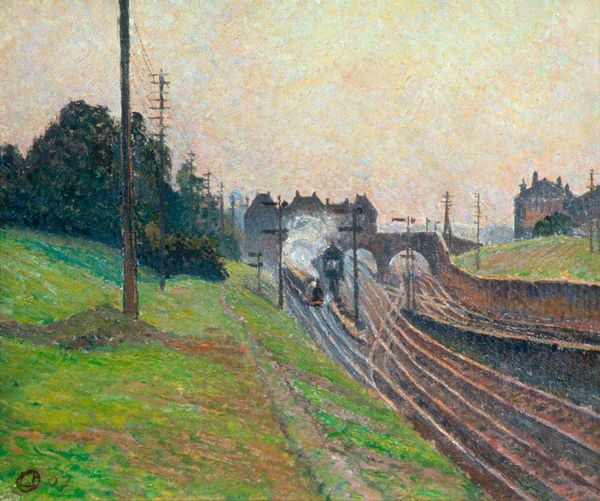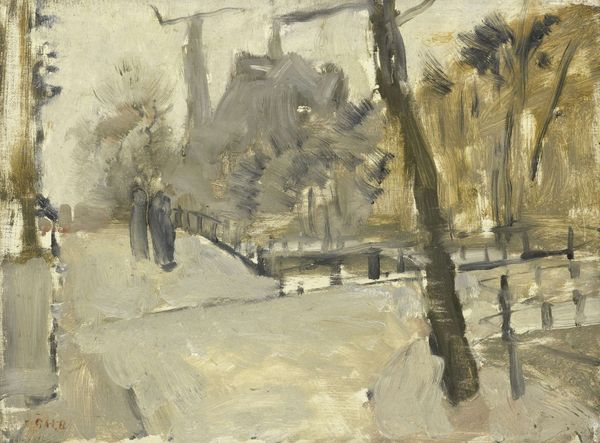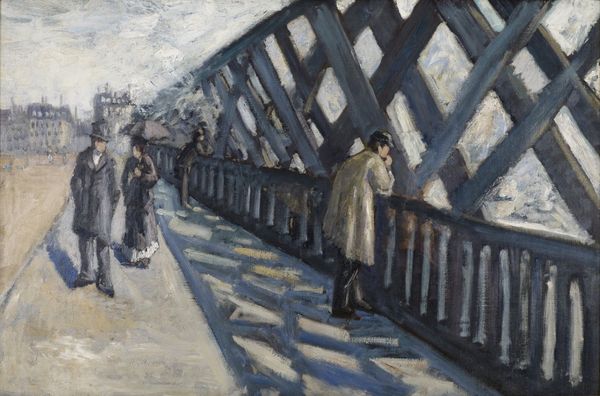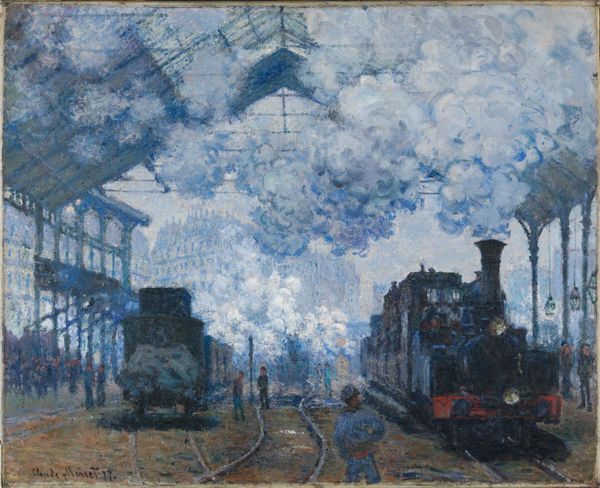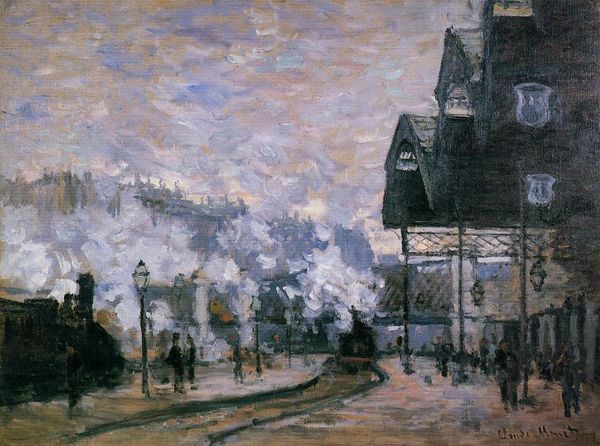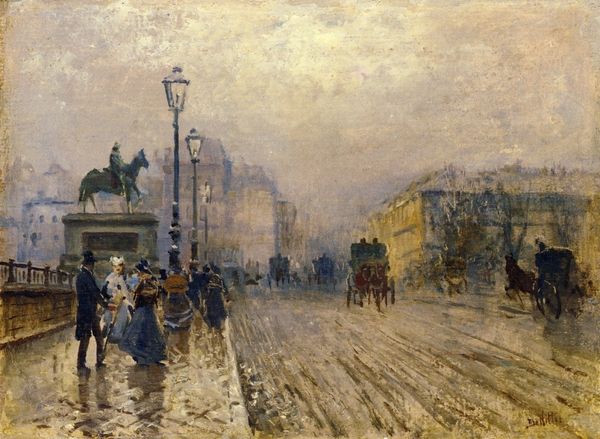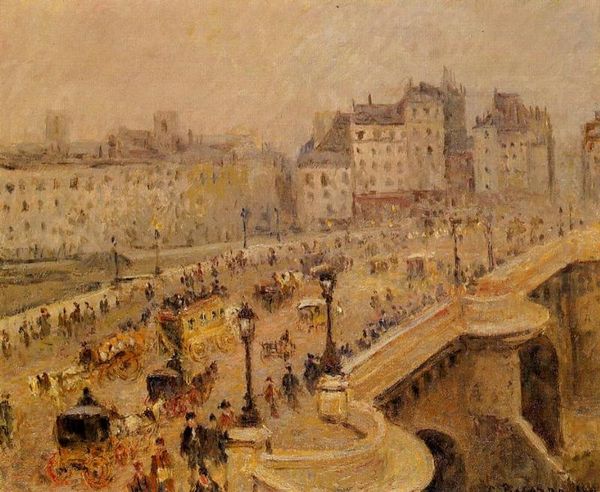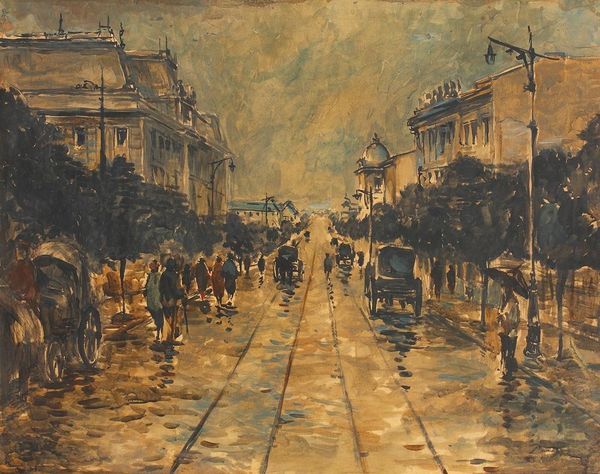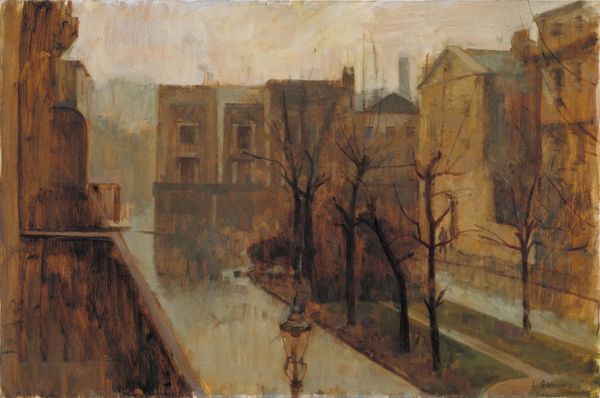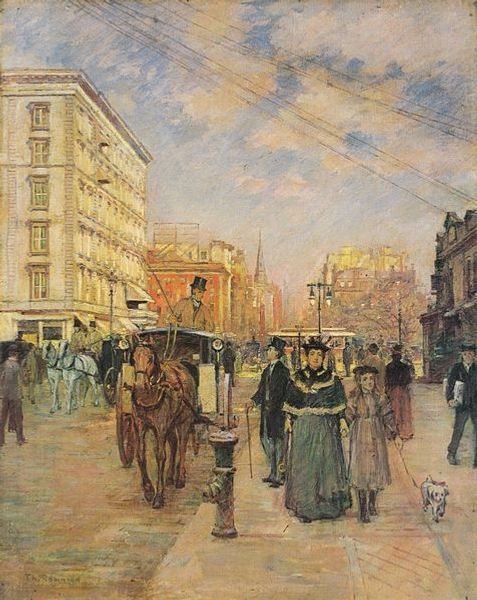
painting, oil-paint
#
painting
#
oil-paint
#
landscape
#
oil painting
#
cityscape
#
modernism
Copyright: Varlin,Fair Use
Curator: "Crossing in Territet" completed in 1936 by Varlin, is an oil-on-canvas painting that captures a very specific sense of place and perhaps, a specific feeling about it. What do you see in it initially? Editor: Melancholy, I think. The palette is muted, and that lone figure standing by the tracks gives me a sense of loneliness. Curator: It’s interesting you pick up on the loneliness. The work appeared during a period of increasing precarity, culminating with the second world war, do you think we see that in the work? Editor: The railway tracks, leading to some unseen destination beneath the bridge... that could easily be a symbol for the relentless march of time, of modernity. Maybe even industrial dread. I mean, are we crossing, going to someplace new, or are we trapped waiting for the train? Curator: Considering that it comes relatively early in Varlin’s mature period, you wonder whether there's a link to other modernist depictions of urban environments. I'm reminded of certain De Chiricos where the geometry of city space becomes a psychological pressure. Editor: Yes, I can see that parallel. But unlike the unsettling quiet of de Chirico, here there’s a distinct lack of monumentality. The human element feels more… fragile. It is also intriguing that the artist doesn't emphasize the crossing itself. He seems interested in capturing the feelings and memories evoked by the crossing and what it symbolises. Curator: It's clear he uses the familiar symbol of transit – trains and railways – but presents it through the lens of an individual's quiet experience. This moves it beyond just the public sphere, doesn’t it? It reflects something of the interwar period of social and political anxieties of mobility, or lack of it. Editor: It certainly provides a deeper view on those feelings of the time; a compelling glimpse into individual life during this historical context, making it so much more than a mere landscape. It uses that emotional weight to let us remember shared cultural moments. Curator: I’ve been thinking about its composition and context. You know, your comments have definitely enriched my understanding of this striking piece. Editor: Absolutely. And, I think analyzing its symbolism and understanding that interplay between private and public experience made the viewing experience so much more interesting.
Comments
No comments
Be the first to comment and join the conversation on the ultimate creative platform.
